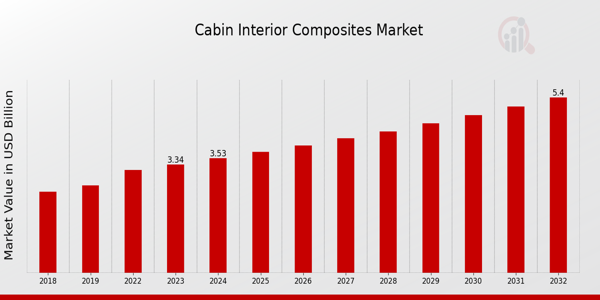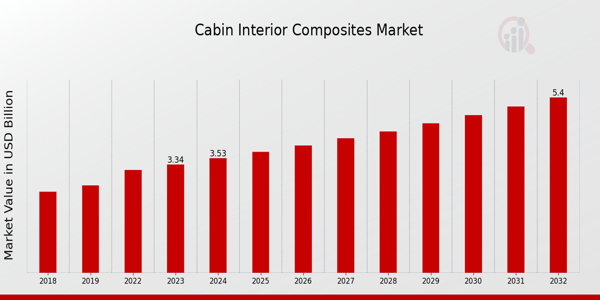Transforming Air Travel Comfort – A Deep Dive into the Cabin Interior Composites Market
-
The aviation industry is constantly evolving to enhance passenger experience, operational efficiency, and sustainability. A vital component of this transformation is the Cabin Interior Composites Market, which is gaining remarkable traction worldwide. A new industry report highlights the rapid growth, key innovations, and strategic developments in this space, underscoring its critical role in modern aircraft design.
Cabin Interior Composites Market Size was estimated at 3.17 (USD Billion) in 2022. The Cabin Interior Composites Market is expected to grow from 3.34 (USD Billion) in 2023 to 5.4 (USD Billion) by 2032. The Cabin Interior Composites Market CAGR (growth rate) is expected to be around 5.48% during the forecast period (2024 - 2032).
As airlines seek lightweight, durable, and aesthetically pleasing cabin materials, composites have become the go-to solution. From seats and panels to flooring and overhead bins, composite materials are revolutionizing how aircraft interiors are built and experienced.
Cabin interior composites refer to advanced materials made from two or more constituent materials with significantly different physical or chemical properties. These materials—typically including carbon fiber, fiberglass, and aramid—offer superior strength-to-weight ratios, fire resistance, and design flexibility. In aviation, these composites are used in a variety of applications including seat frames, wall panels, luggage compartments, lavatories, and galleys.
The Cabin Interior Composites Market is a crucial enabler of the next generation of air travel—where safety, comfort, sustainability, and efficiency converge. As highlighted in the latest report, continuous innovations, rising passenger expectations, and global regulatory pressures are accelerating the shift toward composite-based interiors. Industry stakeholders who invest in material innovation, digital manufacturing, and sustainable practices will be best positioned to capitalize on this growth trajectory.






